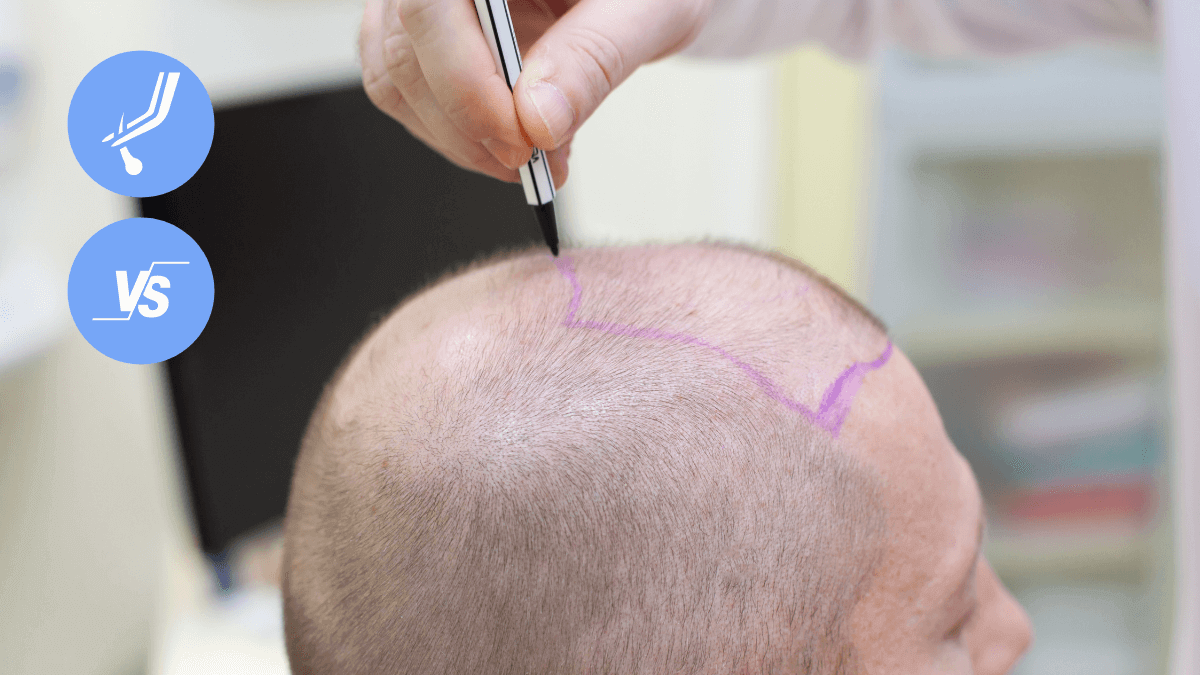TL;DR
▶ DHI is a modified version of the FUE surgery.
▶ Instead of implanting the hair after making an incision with a blade, like in an FUE surgery, an implanter pen is used in DHI surgeries to implant hair without having to cut incisions beforehand.
▶ The DHI technique gives more control to the surgeon over graft placement, angle, and depth, which contributes to more natural results.
▶ Plus, DHI provides less bleeding, less swelling, and faster recovery post-hair transplant surgery.
Naturally, you want the best results out of your hair transplant surgery.
And at this point, you’re past the point where you compared the risk of linear scars in FUT vs FUE.
As you compare DHI to FUE, two almost identical hair transplant techniques, you’ll see that even the smallest changes in the angle of implantation can drastically affect the results you’re going to get:
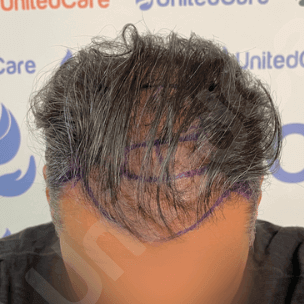
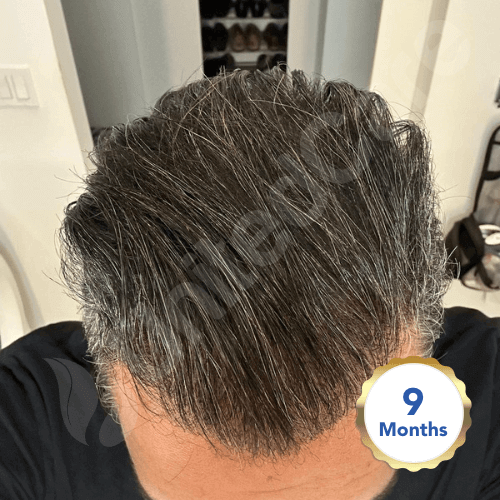


To help with your decision, I will highlight these small changes clearly.
In this blog, I’ll make an in-depth comparison of DHI and FUE to make sure you are equipped with enough knowledge to make the right decision by the end:
Table of Contents
Starting with the older method:
What Is FUE?
First performed by Japanese Dermatologist Dr. Masubi Inaba in 1988 and by Dr. Ray Woods in 1989, FUE was a somewhat revolutionary hair transplantation method that could fix many problems with hair plugs and FUT.
FUE was widely introduced to the world of hair restoration by Dr. William Rassman and Dr. Robert Bernstein in 2002, where they also coined its name.
In FUE hair transplant surgeries, the procedure consists of five exact steps:
1️⃣ The surgeon uses a punch tool to make a millimetric incision around a hair follicle on the donor site.
2️⃣ The surgeon uses forceps to remove the hair follicle.
3️⃣ The hair graft is harvested and stored in a proper liquid until the implantation phase.
4️⃣ Once the required amount of grafts is harvested, the surgeon uses a sharp blade to make millimetric incisions around the recipient/bald areas.
5️⃣ The hair grafts are carefully implanted into these incisions, and the surgeon repeats the process from step four until the hairline is restored.
Using FUE, thousands of hair follicles can be harvested and implanted in 6-8 hours with minimal scarring. At the moment, FUE is the most popular hair transplant technique in the world.
In addition to their popularity, FUE surgeries come with some pros and cons:
Pros of FUE
💠 FUE surgeries are less invasive: Despite still being invasive, they are significantly safer than other alternatives such as FUT, as FUE surgeries are done without taking a strip of skin from your scalp.
💠 They leave smaller scars that are easier to hide: Due to their technique, FUE surgeries leave a minimal amount of scars on your scalp that you can easily hide under your hair.
💠 Natural appearances are guaranteed: FUE surgeries create such natural-looking results that it is almost easy to hide your hair transplant.
Cons of FUE
🔶 Require more expertise: FUE is a more advanced technique that requires more expertise to apply. So, unless you find the right clinic for it, you may put your hair in danger.
🔶 Not the best at recovery time: While still being faster at recovery than FUT, it is slower than DHI.
Now, let’s take a look at your second option:
What Is DHI?
DHI is a modified version of FUE that introduces the DHI Implanter Pen, introduced by The DHI Medical Group in 1999.
The implanter pen replaces forceps and knives during the implanting phase of the hair transplant surgery, turning both opening an incision and implanting the hair graft into a one-step action that’s much easier for the surgeon.
So, the five-step process of FUE is now reduced to four steps:
1️⃣ The surgeon uses a punch tool to make a millimetric incision around a hair follicle on the donor site.
2️⃣ The surgeon uses forceps to remove the hair follicle.
3️⃣ The hair graft is harvested and stored in a proper liquid until the implantation phase.
4️⃣ Once the required number of grafts is harvested, the surgeon uses the DHI implanter to implant hair grafts individually into the recipient area.
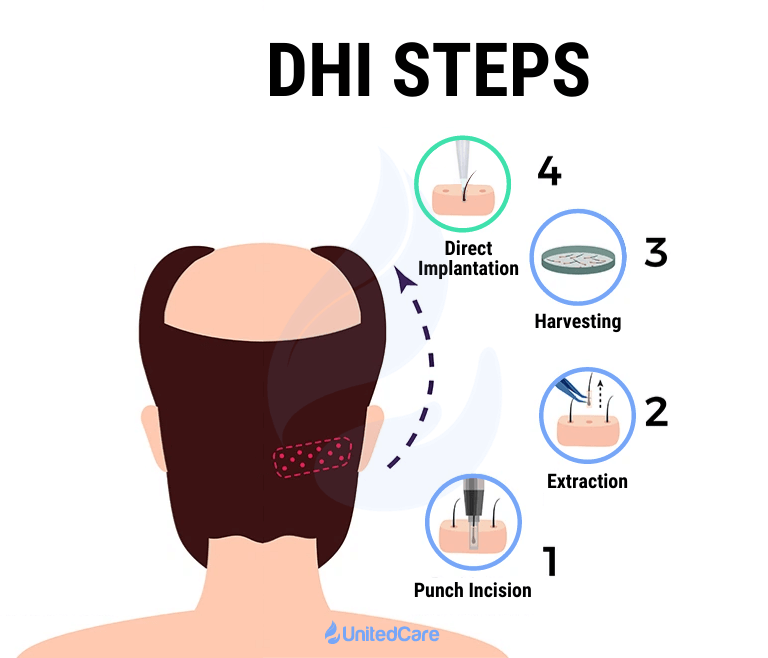
Now, let’s take a look at the pros and cons of DHI too:
Pros of DHI
💠 Fastest recovery time: The implanter pen used in the DHI technique minimizes scars during the harvesting phase and allows you to return to your daily life faster with better recovery.
💠 Improved density: With DHI, surgeons have more control over the implanted hair’s density to create better results.
Cons of DHI
🔶 There are fewer studies about them: DHI is still a relatively new technique that requires more prominent studies to be made about it to gain a more accurate success rate.
🔶 They are more expensive: Since the DHI technique is an advanced version of the FUE technique, this upgrade comes with an increase in cost.
🔶 The surgery is a lengthy process: The complex process of DHI takes a long time to operate. So, achieving your desired result can take more than one session.
At the end of the day, although it isn’t as widely used as FUT and FUE, DHI is highly popular among hair clinics worldwide as well.
Also, aside from both being highly popular, they share other similarities:
Similarities Between FUE and DHI
Before comparing the exact differences between the two techniques, you should understand what’s common and how both techniques proceed. 💡
So, we’ll quickly go over the whole process of DHI and FUE hair transplant surgeries and point out the similarities and differences:
Pre-Surgery
Examination and pre-surgery steps are identical in both techniques.
You get in contact with your desired clinic/surgeon, go through an initial examination/consultation, and set a date for the surgery. Your physician provides you with the necessary information about everything you should and shouldn’t do before the surgery.
Once the day comes, another examination, this time in more detail, is done. Your hair is trimmed, your new hairline is drawn, and you are informed about the next steps of the surgical procedure, as well as what you should and shouldn’t do following the surgery.
Local anesthesia is applied to your scalp, and you take your place on the operation table.
Harvesting
The harvesting phase, too, is identical for both techniques.
The surgeon uses a punch tool to make millimetric incisions on donor grafts, then moves these grafts to a proper liquid or bio-enhanced liquid, depending on your clinic. At this point, grafts wait until the surgeon has the necessary amount of grafts.
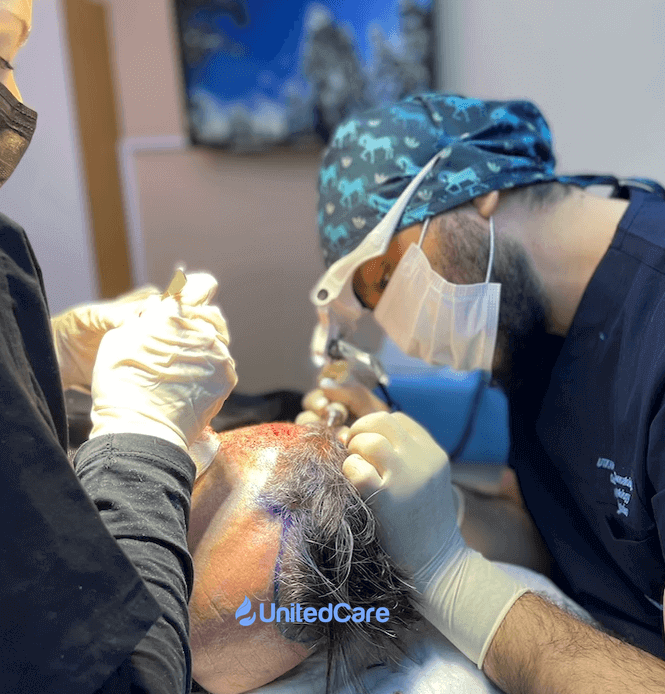
Post-Surgery Care
Another identical part is the post-surgery care following a hair transplant operation.
For both techniques, you are expected to follow a number of guidelines and avoid certain activities, which you can find in detail in our blog about hair transplant care after surgery.
Success Rates and Results
There aren’t any differences between the success rate of FUE and DHI techniques on paper due to a lack of research on this topic.
And the results, along with the time it takes for patients to achieve them, are similar in magnitude.
So, for now, it’s safe to say DHI and FUE are even in the numbers.
Differences Between FUE and DHI
Yes, the actual difference between FUE and DHI might seem like just the tool used to implant the grafts.
👉 But this change affects various aspects of your hair transplantation journey, including pricing, recovery, and results.
Let’s take a look at the exact differences between FUE and DHI:
Tools
I’ve already mentioned this.
▶️ FUE uses small scalpel knives to make micro-incisions on the recipient area and forceps to hold and implant hair grafts into these incisions.
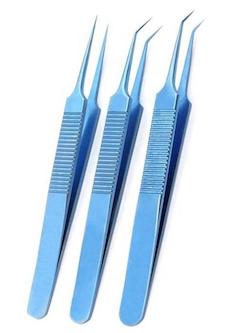
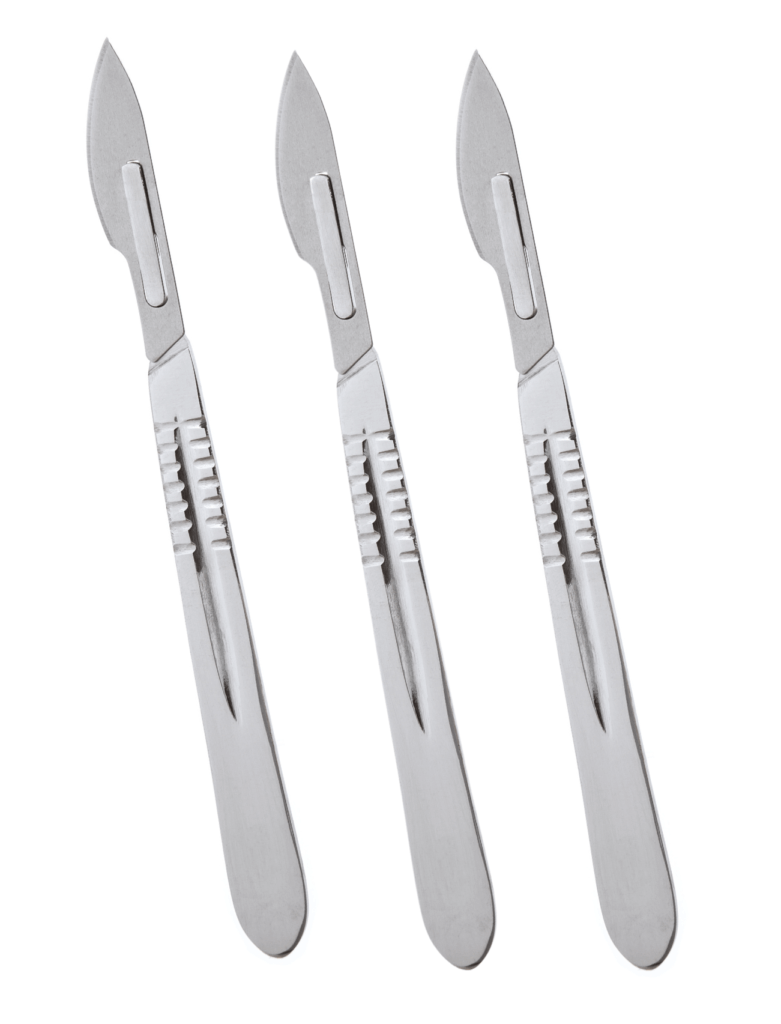
▶️ On the other hand, DHI uses the DHI implanter pen, which acts both as a knife to make incisions and forceps to implant the hair, but simultaneously.
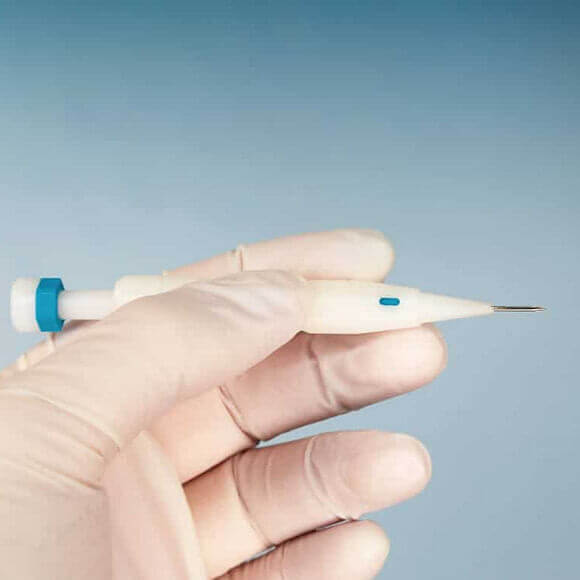
This change in the tools used during the surgery does more than just reduce the procedure by one step.
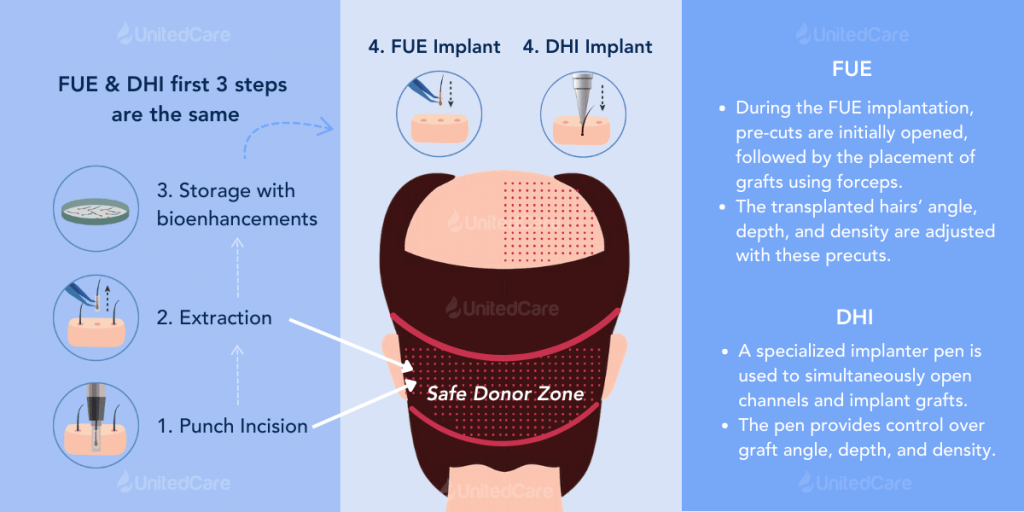
Hair Implantation Method
The first and most significant change is, undoubtedly, the implantation technique the surgeon practices.
➡️ In an FUE surgery, holding and operating a forceps is actually highly tiring. As we get more tired towards the end of the surgery, we can barely direct our focus on the implantation motion.
➡️ In a DHI surgery, however, operating the implanter pen is more straightforward. Plus, since making the incision and implanting the hair is just one motion, the surgeon has much more control over the implantation motion compared to regular FUE.
Using the implanter pen, the surgeon can actually focus more on the angle of implantation, the depth, and the graft placement.
That way, we can ensure our work is the best possible, and this directly affects the results:
DHI vs. FUE Maximum Graft Count
Although the DHI technique may appear simple, it actually requires a complex maneuver that involves a lot of experience. This maneuver determines the angle, depth, and density of the grafts, which are all essential elements that define the quality of an implant.
Therefore, DHI CAN’T be fast, and DHI can’t be done by multiple performers, which limits the maximum graft count of a single session of DHI surgery to 3500-3750.
⚠️ If a clinic claims to be able to implant 5000 grafts with DHI in a single session, it means that multiple performers are implanting grafts, resulting in two different implantation styles and an unnatural appearance.
In FUE, precuts, or a.k.a incisions, are done by the surgeon before the implantation stage. After the incision stage, multiple performers can put/insert grafts into these cuts with forceps, which significantly increases the surgery speed.
Therefore, FUE is fast, and mega sessions of up to 5000 grafts are possible. 👍
Recovery and Results
As I’ve just mentioned, results from a DHI surgery aren’t scientifically proven to be better than those of FUE surgeries.
But, with the implanter pen and the DHI technique, we have much more control over the implantation phase. This control allows us to do our best work and focus on creating more natural results.
And as the majority of expert transplant surgeons and I can agree, the end results of a DHI surgery look much more natural as we catch the perfect depth and angle.
Plus, since the incisions are now much smaller and are done in a quick single motion, the trauma caused to the skin during the implantation phase is significantly reduced. Most hair clinics argue that the reduced trauma causes faster recovery, less bleeding, less swelling, and milder side effects overall. 🍀
But unfortunately, these improvements don’t come free:
DHI vs. FUE Cost
Since DHI provides better results and more advanced equipment is used, the price range of a DHI surgery is higher than an FUE surgery.
Based on the numbers we’ve compiled on our hair transplant costs page, DHI surgeries, on average, cost 30% more than FUE surgeries.
So, What Should You Choose?
DHI certainly has its own advantages, but the increased price range can be a deal-breaker for most. Or, the clinic that is suitable for you might NOT offer DHI surgeries at all.
At the end of the day, the final decision is made by you, and since we’ve gone through every detail in this blog, it should be an easier decision.
Alternatively, you can decide on what you should get with the help of expert dermatologists:
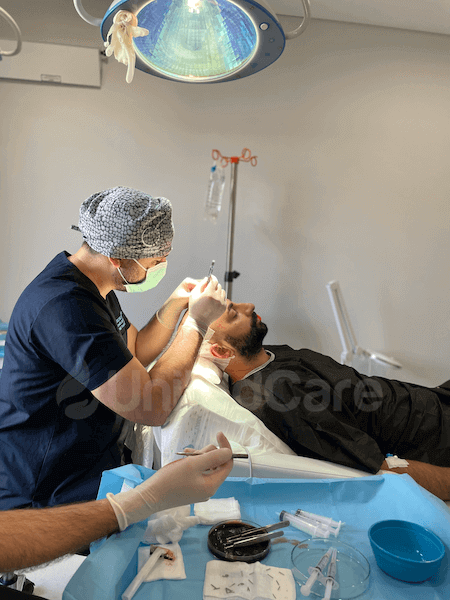
At UnitedCare, we begin your hair transplant process by offering you a FREE one-on-one consultation with our expert dermatosurgeons to decide your method together.
💊 Our holistic approach provides advanced technologies and bio-enhancements to ensure you do not need another surgery.
We use intracellular solutions (a.k.a bioenhancements), helping cells stay alive for days outside the body. These solutions increase graft survival rates significantly. 💉
Most importantly, our care assistant/patient manager is in contact with our patients even before and after the surgery, ensuring that your transplant becomes permanent. 🍀
Affordable hair transplant costs, a holistic approach, and experienced dermatologists on-site are here to provide you with the right solution.
Click here to get a FREE consultation now:
You can decide between FUE and DHI surgeries with the help of a dermatologist.
UnitedCare’s expert dermatologists provide you with a holistic approach to hair transplant surgeries:
Frequently Asked Questions (FAQs)
Is DHI better than FUE?
Although there isn’t currently any research or study proving or suggesting that DHI produces better success rates or results, numerous experts in the hair restoration industry lean towards DHI and claim that the results are much more natural and recovery is much easier when an implanter pen is used.
Which hair transplant method is the best?
In 2024, the majority of hair restoration clinics lean towards three advanced variations of FUE surgery as the best method: Sapphire FUE, Direct Hair Implantation, and ARTAS Robotic Hair Transplant surgeries.
Is DHI more expensive than FUE?
Yes, based on our research, DHI surgeries are, on average, 30% more expensive than traditional FUE surgeries.
What are the disadvantages of DHI?
DHI is still a relatively new technique. So, one somewhat disadvantage is that its effectiveness is still in question and requires more prominent studies to be made about it to gain a more accurate success rate. It is also more expensive than other techniques. And lastly, the surgery is a lengthy process, which means achieving your desired result can take more than one session.
Does DHI heal faster?
Yes, it does. The implanter pen used in the DHI technique minimizes scars during the harvesting phase and allows you to return to your daily life faster with better recovery.
